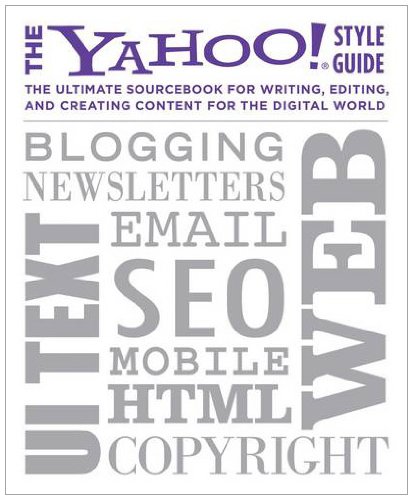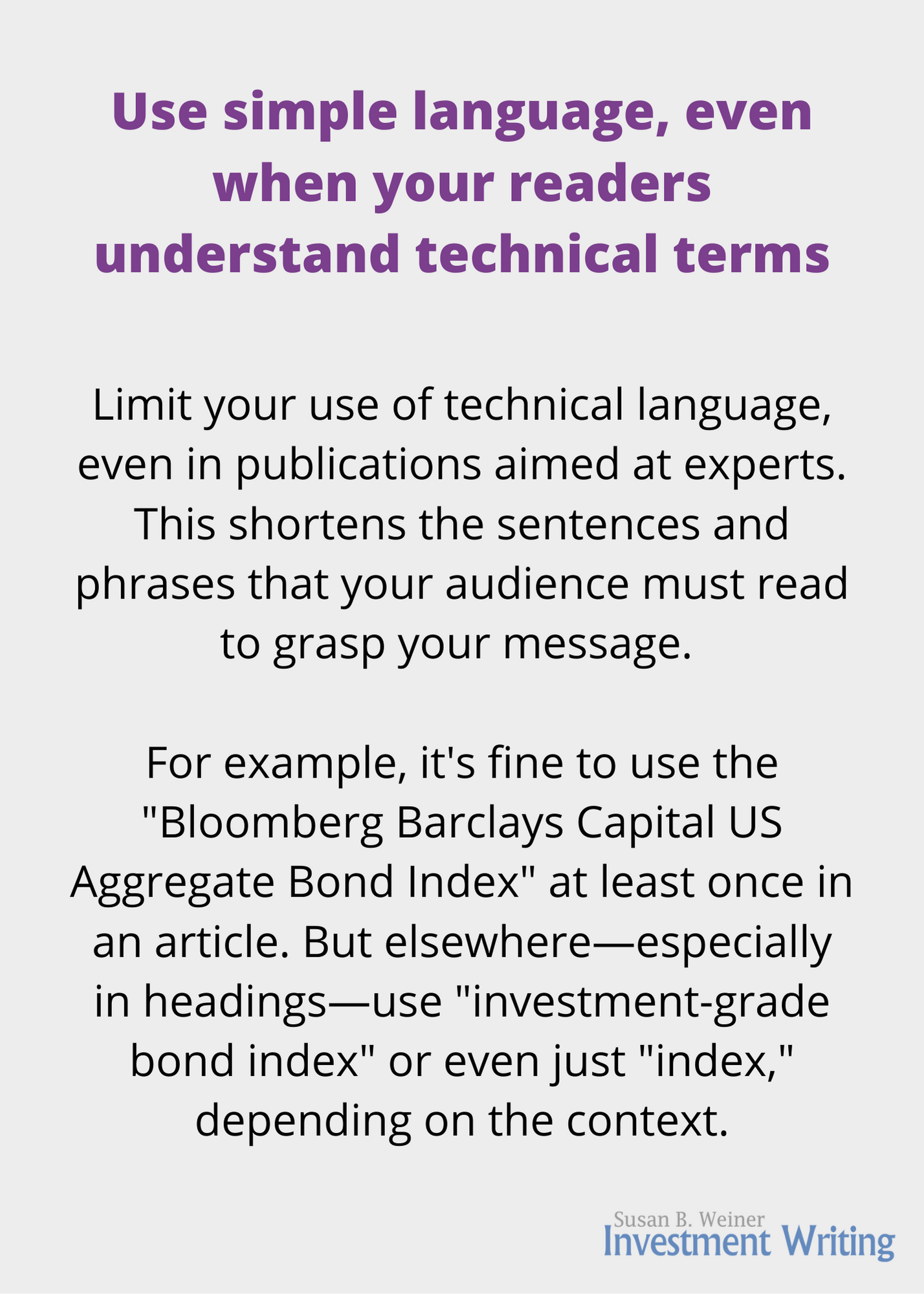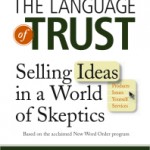Simple language helps your readers, even when they understand technical terms
Plain language helps your readers, even when they understand technical terms.
The Yahoo! Style Guide makes a great point on this topic:
Even if more technical or sophisticated language is appropriate for your site, your readers will appreciate simpler language in the areas where their eyes are scanning to determine what a page is about.
Example of how to use simple language
How does this apply to you? Let’s assume, for example, that you’re writing a piece about the Bloomberg Barclays Capital US Aggregate Bond Index. That’s quite a long name—too long for a snappy headline or heading.
If you are speaking face-to-face with bond geeks, you can probably refer to “the Agg” because you can judge from your conversation—and their faces—whether they understand your language. If you say “Bloomberg Barclays Capital US Aggregate Bond Index,” they’ll probably become impatient with the long-winded, overly precise language.
However, such “insider” language probably isn’t right for a printed piece. It’s too casual.
What’s the solution?
You could substitute “bond index” or “investment-grade bond index” in your headline or heading. As Yahoo suggests, this will help your readers to skim. If they don’t immediately realize you’re talking about the Agg, they’ll quickly pick it up when they dive into the body of your piece, where it’s good to be precise about your index.
Try using plain language. If you do it right, you’ll enjoy the results.
To learn more about plain language and other pillars of powerful written communications, check out the June 26 webinar, “How to Write Investment Commentary People Will Read.”







